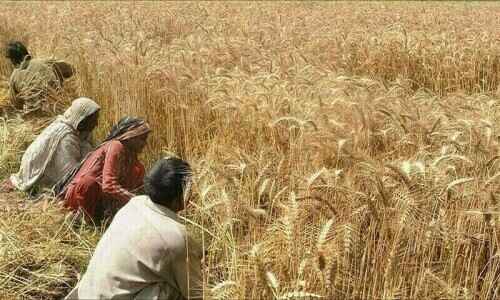The Kissan package will receive Rs5 billion from the federal government for the upcoming fiscal year, which begins on July 1. The sum is somewhat more than what it would cost to operate the civil government for two days (the government has estimated that it will cost Rs839bn in FY25, or roughly 2.36 billion per day).
Through a markup and risk-sharing program created in 2022, farmers will be able to purchase agricultural machinery with subsidized loans thanks to this federal fund for agriculture.
In terms of provincial budgets, the sector has been given Rs30.7 billion in Sindh and Rs117.2 billion in Punjab. Balochistan’s budgeted allocation was Rs23.8bn, whilst Khyber Pakhtunkhwa had given Rs31.5bn.
Surprisingly small provincial budgetary allotments to agriculture are made for Punjab (2.2%), Sindh (1%) KP (1.8%), and Balochistan (2.5%). When Sindh’s Rs35 billion allotment for irrigation—a field intimately associated with agriculture—is taken into account, the state’s spending increases to 2.1 percent, matching Punjab’s.
Pakistan’s limited federal and provincial budgetary allocations to the agriculture sector are insufficient to produce an exportable food surplus.
Millions of small farmers are expected to suffer greatly in light of this low level of anticipated spending, rising input costs for all main and minor crops, and the cattle industry due to energy price hikes and the elimination of subsidies.
Muhammad Aurangzeb, the Federal Finance Minister, claims that agriculture creates 37.4% of jobs and contributes 24% of Pakistan’s GDP. According to nominal allocations for the agriculture sector, net job creation in agriculture is still only a pipe dream. Agricultural growth in the 2019 fiscal year is expected to be moderate, hovering around the targeted 2 percent.
It’s not inconceivable how that would impact our fragmented political economy and our capacity to export more food items at more competitive costs per unit.
Parliamentarians who represent the landed gentry, industrialists, and those who support both rural and urban Pakistan are clearly divided from one another, but terrorism still thrives in isolated havens, preying on the impoverishment of those who depend primarily on forestry and agriculture.
In this scenario, by cutting administrative expenses and making better-informed choices about conflicting budget priorities, the provincial governments may have prevented the error of providing insufficient funding for agriculture.
Surprisingly little of the overall budget is allocated by the provinces to agriculture.
The necessity to maximize non-debt foreign exchange inflows stems from Pakistan’s faltering external industry. These inflows mostly come from exports and remittances, with food exports making up a sizable portion of these. What else but a steady rise in exportable surplus can maintain this growth momentum?
Given that agriculture is expected to grow by just 2% instead of 6.2 % this year, the nation will not be able to continue producing an exportable food surplus in the upcoming fiscal year if provincial governments provide less money for agriculture than is necessary.
Pakistan’s food exports increased 46.4 percent to $6.83 billion in just eleven months of FY24, or 24 percent of the country’s total goods exports of $28.12 billion. Since textiles, the nation’s largest export industry, and other non-textile, non-food sectors cannot expand at a greater rate than they did in the past, the country must continue to export food at this proportion going forward.
The International Monetary Fund’s estimates affected the FY25 budget, which provides restricted incentives to the textile and non-textile sectors. Prime Minister Shehbaz Sharif promised energy price relief for industries and efficient export-oriented enterprises. However, wage increase pressures following a 25 percent salary hike for federal personnel and comparable or greater hikes by the provinces may restrict the impact of the relief on export efficiency.
The most important lesson is that food exports need to increase dramatically, necessitating sufficient investment for agriculture from all provinces and reasonable symbolic support from the federal government.
Better food and related product pricing per unit would be the ideal cause of the recent increase in food exports, not more export volumes. The State Bank of Pakistan’s goal of attaining an average headline inflation of 12 percent in the 2019 fiscal year may be challenged by this strategy, which attempts to prevent increased food inflation and reduce overall inflationary pressures.
This calls for raising agricultural yields per acre and reducing losses both before and after harvest. Additionally, it necessitates raising the milk and meat production per head of animals, which calls for higher and more intelligent agricultural expenditures.
The federal budget’s announcement of the removal of tax exemptions for fertilizers and other agricultural inputs, as well as the possibility of raising electricity costs for tube wells, a rise in the sales tax on food items, and steps to impose a uniform tax rate on food exporters, would limit efforts to rein in food inflation.
Additionally, they will make it harder for companies that export food to stay competitive in the global market. During the first 10 months of this fiscal year, urban Pakistan’s annualized food inflation fluctuated between 40.2 percent in July 2023 and 11.3 percent in April 2024. The rate of food inflation in rural areas varied from 41.3 percent in July 2023 to 9.5 percent in April 2024. If the exceptionally low values of May 2024—minus 0.1 percent in rural areas and 2.2 percent in urban areas—remain sustainable, only time will tell.








